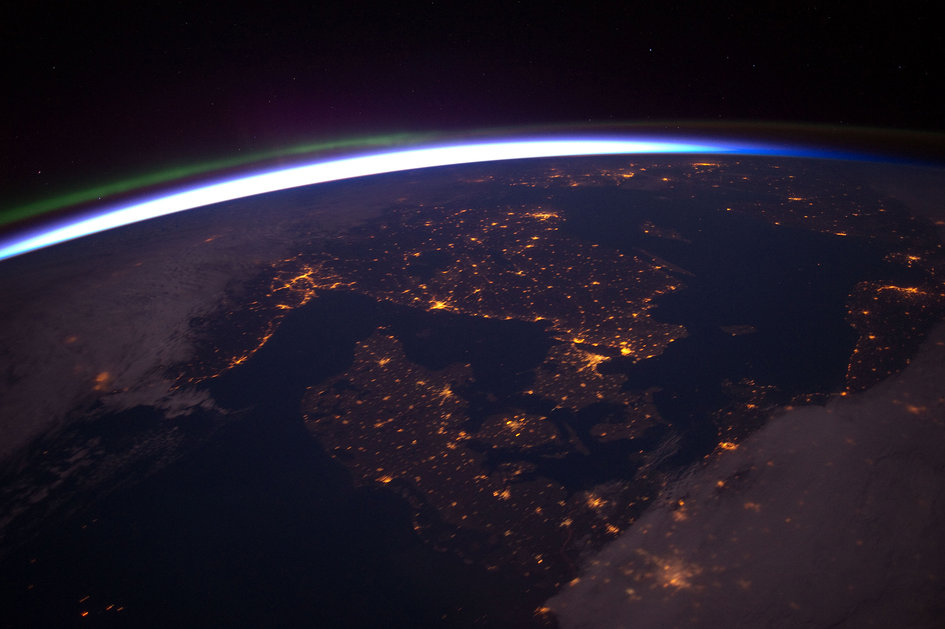 |
| Human spaceflight and operations image of the week: Copenhagen seen from International Space Station Credits: ESA/NASA |
This image of Copenhagen,
Denmark and its surroundings was taken by an astronaut on the International
Space Station in 2012. Earth Day is held each year 22 April to support
environmental protection.
Copenhagen is considered to
be one of the most ecological cities in the world but this image shows the
reach of human influence on our fragile planet.
The light visible from 400
km above Earth reveals the human footprint on land. The yellow light is wasted
energy from houses, factories and streetlights. This energy is not only a
nightly drain on resources but also interferes with nocturnal wildlife.
The green hue surrounding
our globe is the aurora – our atmosphere protecting us from harmful solar
radiation. The blue–white band below is the light from the setting Sun.
That thin layer is all we
have to protect us from solar winds, cosmic rays, ultraviolet light and the
vacuum of space. We had better take good care of it.
O Norte Europeu à noite
A imagem acima, de
Copenhague, na Dinamarca, e seus arredores foram feitas por um astronauta que
estava na Estação Orbital Internacional em 2012. O Dia da Terra é celebrado no
dia 22 de abril, em apoio à proteção ambiental.
Copenhague é
considerada uma das cidades mais ecológicas no mundo, mas esta imagem mostra o
alcance da influência humana sobre o nosso frágil planeta
A luz visível a 400
quilômetros acima da superfície terrestre revela a impressão digital humana na
terra. As luzes amarelas representam energia desperdiçada de casas, fábricas e
iluminação de ruas. Além desta energia representar uma perda de recursos, ela
também produz efeitos na vida noturna de animais.
O filamento esverdeado
que envolve o globo terrestre é a aurora – a atmosfera nos protegendo da
radiação solar prejudicial à vida. A faixa azul e branco abaixo é a luz do sol
se pondo.
Essa fina camada é tudo
que temos para nos proteger de ventos solares, raios cósmicos, radiação ultravioleta
e o vácuo do espaço sideral. É melhor cuidarmos bem dela.
Tradução: F. A. da Costa
Source/Fonte: ESA
Tradução: F. A. da Costa
Source/Fonte: ESA
Nenhum comentário:
Postar um comentário